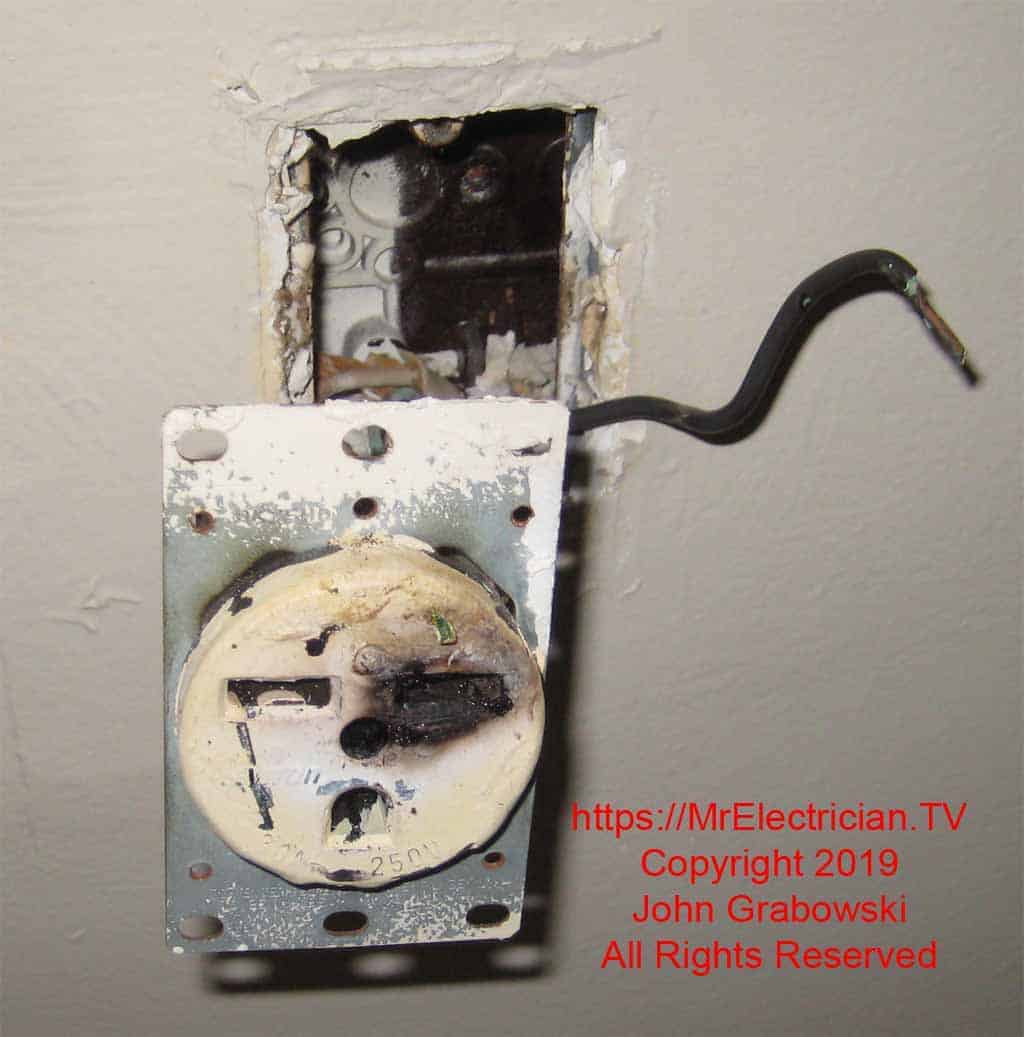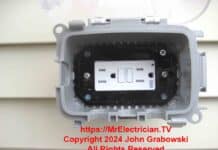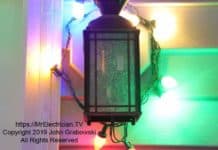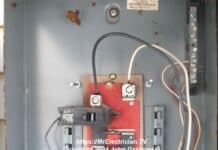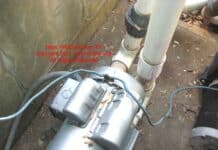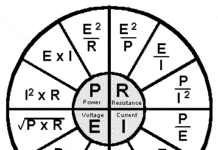Dear Mr. Electrician: What are the effects of electricity on the human body?
Answer: Below is a chart that was compiled many years ago of the effects of electricity on the human body. It explains the effects of electricity on the human body when receiving electrical shocks of different intensities. Do not try this yourself or on other people.
Table of Contents:
- Effects of Electricity On Humans
- Protect Against Electrocution
- Boating Hazards
- Swimming Pool Electrical Hazards
NOTE: Some text links below go to applicable products on EBay or Amazon. As an Amazon Associate, I earn from qualifying purchases. Using my links helps to keep this website FREE.
EFFECTS OF ELECTRICITY ON THE HUMAN BODY
| Amount of Electrical Current |
Reaction to the Human Body |
| Below 1 milliampere | Generally not perceptible |
| 1 milliampere | Faint tingle |
| 5 milliamperes | Slight shock felt; not painful but disturbing. Average individual can let go. Strong involuntary reactions can lead to other injuries. |
| 6–25 milliamperes (women) | Painful shock, loss of muscular control* |
| 9–30 milliamperes (men) | The freezing current or “let-go” range.* Individual cannot let go, but can be thrown away from the circuit if extensor muscles are stimulated. |
| 50–150 milliamperes | Extreme pain, respiratory arrest, severe muscular contractions. Death is possible. |
| 1,000–4,300 milliamperes | Rhythmic pumping action of the heart ceases. Muscular contraction and nerve damage occur; death likely. |
| 10,000 milliamperes | Cardiac arrest, severe burns; death probable. |
* If the extensor muscles are excited by the shock, the person may be thrown away from the power source. |
|
| NOTE: 1000 milliamperes equals one ampere which is approximately the amount of current that flows through a 120 watt light bulb at 120 volts. | |
| Source: W.B. Kouwenhoven, “Human Safety and Electric Shock,” Electrical Safety Practices, Monograph, 112, Instrument Society of America, p. 93. November 1968. | |
Below is a tragic story of a girl who got electrocuted in the bathtub. Please do not use extension cords in the bathroom. I was on a repair call for a bathroom fan once when I noticed that my older client had an electric heater next to his bathtub. It was plugged into a GFCI outlet with an extension cord.
In addition to an electrical hazard, the extension cord on the floor was a tripping hazard. I tried to explain the effects of electricity on the human body from that potential electrical hazard and even wrote it out on my bill, but I think it was more important to him to have heat when he got out of the shower.
PROTECTION AGAINST ELECTROCUTION
GFCI-protected electrical outlets are required in basements, bathrooms, garages, outdoors, service outlets, kitchens, swimming pools, and appliances and for equipment such as air conditioning, electric clothes dryers, and electric stoves. Read article 210.8 in the National Electrical Code Book (NFPA 70).
Following some common-sense guidelines, you can protect yourself from electrical shock and electrocution. When working or playing outdoors and using electricity, be sure everything is plugged into GFCI receptacles. GFCI receptacles and circuit breakers are designed to shut off power if there is a current imbalance of more than five milliamperes. They are designed to save lives.
If you work outdoors regularly using power tools, you should get a portable GFCI. A portable GFCI is OSHA-approved and has one additional protection factor that regular household GFCI outlets and circuit breakers do not have.
Portable GFCIs have lost neutral protection. It will shut down if the portable GFCI device senses its neutral wire connection is gone. A standard GFCI electrical receptacle does not do that, nor does a GFCI circuit breaker.
When shopping for a portable GFCI, ensure the labeling says OSHA-approved or open-neutral protection. I have noticed that a few on the market don’t have such labeling. Buyer beware.
You can see the model portable GFCI I own on my Be Safe When Working at Home Post.
Wear shoes when working outside using electrical tools and equipment.
The same applies when working in the garage or basement. The concrete floor is a very good electrical grounding surface. Electricity can very easily pass through your body directly to the concrete floor. Always wear shoes when working with electricity on concrete floors.
The 2023 National Electrical Code has an expansion of GFCI requirements for such things as outdoor central air conditioning units, electric clothes dryers, and electric stoves. Some applicable articles are 210.8(A)(1) to (11), 210.63(A), 210.63(B).
A GFCI electrical outlet or circuit breaker does offer good protection against shocks and electrocutions, but there is no guarantee in all circumstances that tragedy will be averted. Use common sense and keep electricity away from water, pets, and kids.
ELECTRICAL HAZARDS WHILE BOATING
I have been reading more and more articles about electric shock hazards from boats. People have received shocks or have been electrocuted from swimming around boats docked in the water. Some of the causes have been traced back to faulty boat wiring, some of which was modified by the boat owner. All electrical outlets for boat docks must be GFCI-protected. Read article 555 in the 2023 National Electrical Code for requirements.
Do not go swimming in the water where boats are located. Without going in the water, there is no way to know if an electrical hazard exists.
ELECTRICAL HAZARDS FROM SWIMMING POOLS
In my state, an electrical inspection and certification of commercial pools is required every five years. I have done a few of these and have always found a problem or two. Most have been easily correctable.
Some problems I have found are bad GFCI circuit breakers, pool bonding breaks, loose bonding lugs, no sign pointing to the pool emergency shut-off, circuit breakers and disconnect switches not labeled, and no bonding wire on an old pool. One commercial pool that I inspected had no emergency shut-off switch.
However, my state does not require an electrical inspection of homeowner-owned pools. Pool companies service many home pools but are not qualified to determine electrical code violations or safety issues.
If you own a pool, I strongly recommend that you have a licensed electrician inspect and test the pool grounding and bonding and the GFCI circuit breakers for the pool equipment. Have it done every few years.
The same electrical hazards could exist in hot tubs, water fountains, and homemade ponds. Their circuits should be GFCI-protected as well. These are all places where the effects of electricity on the human body can be deadly.
When working on electrical wiring, it is important to shut the power off. However, just because the circuit breaker is off does not mean all current flow has stopped. Multi-wire circuits must now have a two-pole or three-pole circuit breaker. Several years ago, this was not a requirement. Consequently, many homes and businesses wired with multi-wire circuits do not have a multi-pole circuit breaker.
This is important because the neutral conductor is shared between circuits on a multi-wire circuit. So if one circuit is off, the current can still flow on the neutral from the other circuit.
I was doing some repairs in a home for a do-it-yourselfer who was preparing to sell his home when I felt the effects of electricity on the human body. I was working in a junction box thinking the power was off. I double-checked and the power was off. I got zapped on the neutral. But where was that current coming from?
I removed the circuit breaker cover and saw no multi-wire for the circuit I was working on. The breaker to the circuit was off and no power was coming from it.
I had the homeowner shut off each circuit breaker in the main electrical panel until the neutral current disappeared (I used a pigtail light between neutrals). The other circuit breaker turned out to be located in a sub-panel.
When the homeowner was installing the basement wiring himself, he needed a neutral in a switch box, so he tapped into the nearest junction box to use the neutral only. Very dangerous!
For true-life stories from people injured by electricity, visit the National Fire Protection Association’s (NFPA) Faces Of Fire web page.
See this NFPA post about fires from electricity.
Read some of my other safety tips here.
To help keep this website FREE, please use this Amazon link for your purchases. As an Amazon Associate, I earn from qualifying purchases.
Click for a FREE copy of my book “Almost Everything You Need To Know To Repair a Bathroom Exhaust Fan In Your Home.”
Get your required “Emergency Disconnect, Service Disconnect” labels and stickers to satisfy the 2023 National Electrical Code requirements in article 230.85(E)(1) and (2) by going to my Redbubble Shop here.
Visit my Link Tree home page for my social media connections and other links.
